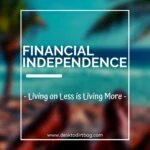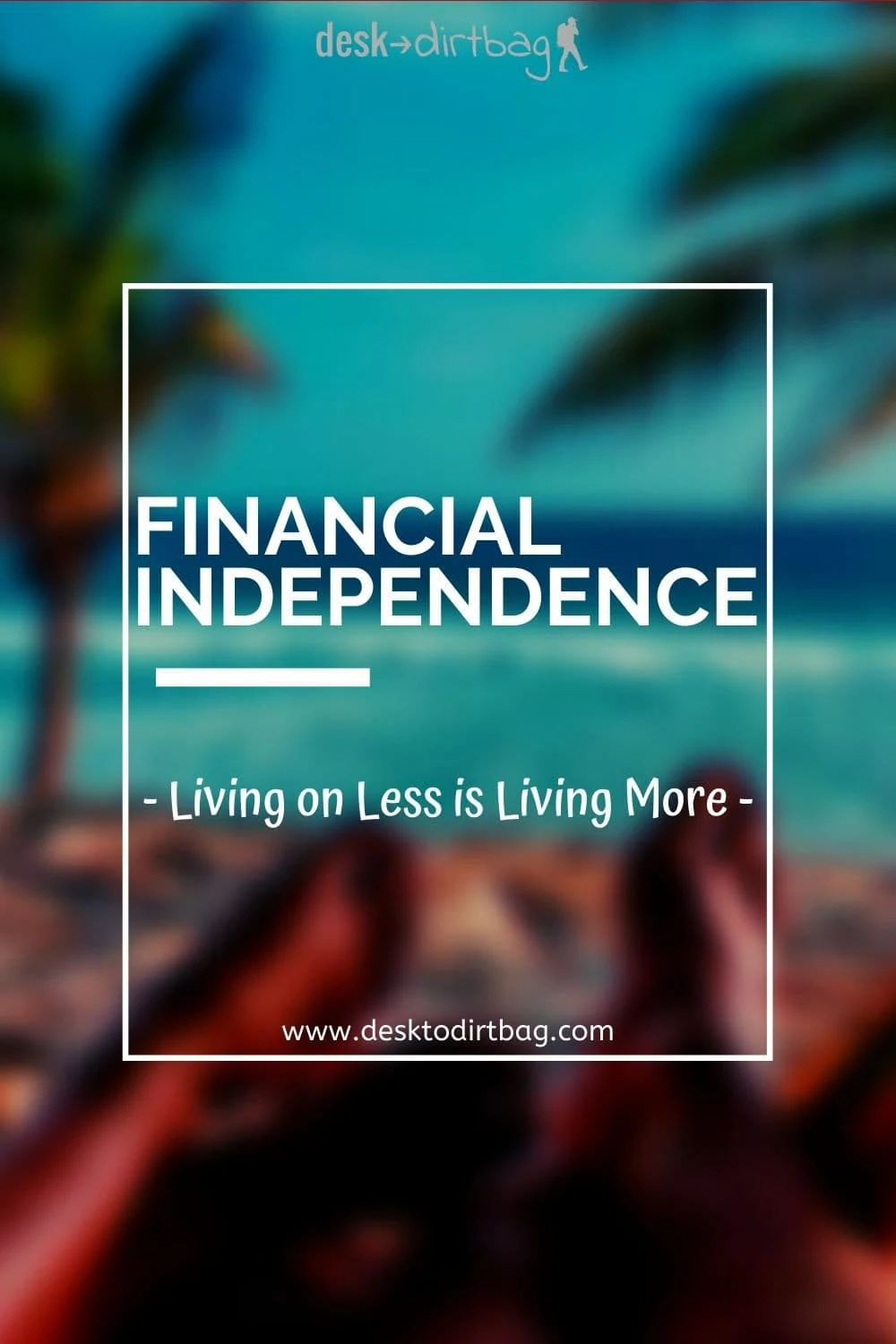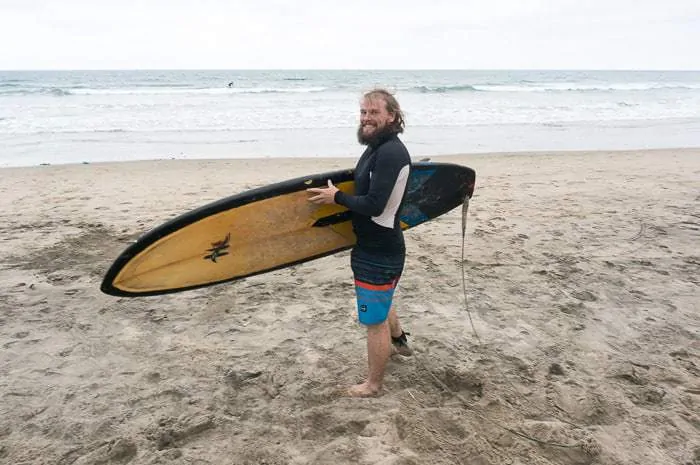Live on less and live more. This is a theme that I have tried to pound into my readers’ heads at various times on this blog. Living on less directly equates to living more, which is why if you want more freedom and adventure, then you must, must, must avoid the traps of consumerism and Keeping up with the Joneses. If you want to be working less, living more, and enjoying your life, then you’ll need to achieve financial independence.
The typical model of American life equates to approximately 25 years of learning, 40 years of working (40+ hours per work), and 25 years for retirement.
This model implies that learning is for the young, leisure is for the old, and that your only option is 40 years of indentured servitude.
We work, work, work, and because of that, we end up spending far more money for conveniences than you otherwise would if you were retired (or while on a mini-retirement).
You pay for conveniences becomes your time is limited: you eat out two or three times per day because you don’t have time to cook, you pay for whirlwind expensive vacations because you only have one week, and you buy all sorts of gadgets and toys (electronics, ATVs, Stand Up Paddleboards, etc) because you “deserve it” in order to justify all your hard work and time invested.
If you really do the math though, you’ll find that you are actually trading your money for more indentured servitude. With each dollar you spend, you are building the walls of your own prison even higher.
That’s why we get so many people exclaiming that early retirement, mini-retirements, or taking breaks from the 9-to-5 is “impossible”. No, it isn’t. It’s actually quite simple. It might not be easy, but it is simple and it is most definitely worth it.
A few rules:
Spend less than you earn. Hopefully, far less than you earn.
Don’t take on debt. If you’re in debt, then stop here and go read my article on how to get out of debt!
Read More: Conquering Debt Mountain
Working Less, Living More Math
Let’s do some math.
Let’s say that Johnny is making $100,000 per year in take-home pay working his desk job. But he spends basically 100% of his income every month on going out to eat, partying, leasing a fancy car, and rent for his big apartment, etc. He’s doing the opposite of working less, living more, but rather working more and living less.
This is normal in America.
According to a 2016 survey, 69% of Americans had either nothing or only a few hundred dollars in savings.
On the other hand, let’s say Christina is also making $50,000 per year, but she only spends 50% of her take-home pay by living more modestly, cooking at home more frequently, and not buying so many toys.
She invests that other portion of her money directly in an index fund or ETF (exchange-traded fund) that is indexed across the entire S&P 500 or the entire stock market.
So, when can Johnny retire? Never.
If he’s spending 100% of his income, he can never afford to leave the 9-5, at least not until he begins collecting Social Security, or his 401k kicks in (hopefully he contributed).
When can Christina retire? That’s where things become interesting.
If Christina is living off of 50% of her take-home pay ($25,000) that means she requires less money to live on and can afford to retire much sooner… Certainly, before the traditional age of 65, if she wants.
At 50% savings, it basically means that for every year she works, she can afford not to work for one year.
Now, you might think that she would have to work 20 years in order to be able to afford to retire 20 years early (equaling the 40-year typical work span). But thanks to the power of the stock market and compound interest, it becomes much shorter.
In this case, with an average return of only 5%, she would have to work for 16.6 years before she could retire early. With a more realistic return of 11% per year, she would only have to work 12.7 years before she could replace her earned income with passive investment income without drawing down the principal.
Obviously, this doesn’t mean she *has to* retire, only that she has the absolute freedom and flexibility to do so. She has achieved financial independence and has opened the gates to working less, living more, and following her true passions.
HINT: Freedom is found not in the dollar amount you make but in the percentage of income you are able to save.
Take stock: How many months could you last if you weren’t making any money at all? Most Americans couldn’t go more than a few months, max, without any form of income. They consume so much or have raised their lifestyle so high, that they can’t escape their own prison.
Living on less and reducing your consumption is a double-edged sword because you can save more and you ultimately need less money to live.
And living on less money doesn’t necessarily mean living a life of sad austerity, indeed I’ve shared previously on the blog how much it costs to live a life of full-time travel, which may surprise some.
On Being a Minimalist
Some people mistake my message of Buy Less, Do More, as “buy nothing whatsoever”. But that would be misinterpreting. I buy things, yes, even things I don’t necessarily need. I’m not against consumption, I’m just for a more conscientious consumption or more intentional consumption.
That means don’t buy things on a whim, do a bit of research and truly analyze whether you need it, whether you will truly utilize it, and whether it is the best you can afford in terms of performance, quality, and/or reliability.
You should also be sure to analyze the lost opportunity cost, which basically means that if an item costs $1,000, then what are you giving up by purchasing it?
In many cases, $1,000 could easily offer you a month of travel, for instance, or which could be contributed to the stock market which would offer compound returns. Buying less is a key part of working less, living more, and not consuming so much. You’ll need to work lots and have lots of money to constantly consume.
You should also analyze how many hours of work it costs you to purchase it… But be sure to account for your true earnings per hour, which means time commuting to work, preparing for work, and indirect expenses (clothes, equipment, professional memberships, etc). Most high paying jobs have all sorts of expenses that one doesn’t really think about (the fancy car, the big house, things to prove that you are successful, because no one would higher a lawyer driving a Geo Metro).
I’m not a person that buys nothing. I’m not financially independent. I don’t make a lot of money. But I do have more time to do the things I love and live a life that I’ve intentionally chosen to lead thanks to the fact that I choose to live on less and don’t place a lot of weight on Keeping up with the Joneses. I’ve also learned a lot about how to better use the money I do have thanks to the fundamentals of the Financial Independence and Early Retirement movement.
Did you know that if you multiply your annual expenses by 25, then that is the “magic number” for you to retire early and live solely off your passive income? In other words 4% of what you currently have across all your savings, investment and retirement accounts.
Check out this awesome calculator from Networthify to help you gauge when you could become financially independent based on your savings rate.
Is the minimalist lifestyle the best way to live life? I can’t say, but it certainly beats slaving away for 40+ hours per week to buy things I barely use to impress people I don’t really care about. It’s also better for the planet that we aren’t needlessly consuming things that often end up in a landfill in a few years. Working less, living more, it’s a simple idea that many believe to be unachievable. But it most certainly is with conscious effort and without millions in the bank.
If you want to learn more about financial independence and retiring early, I would strongly recommend you check out the book The Simple Path to Wealth or check out a handful of other amazing books to improve your financial literacy.
Read Next: Improve Your Financial Literacy
Share This
Did you enjoy this post about Financial Independence: A Simple Path to Working Less, Living More, and Finding Happiness? Share it on Pinterest, Facebook, or Twitter.
Ryan
Latest posts by Ryan (see all)
- Kazakhstan Food: Exploring Some of its Most Delicious Dishes - August 7, 2023
- A Self-Guided Tour of Kennedy Space Center: 1-Day Itinerary - August 2, 2022
- Fairfield by Marriott Medellin Sabaneta: Affordable and Upscale - July 25, 2022
- One of the Coolest Places to Stay in Clarksdale MS: Travelers Hotel - June 14, 2022
- Space 220 Restaurant: Out-of-This-World Dining at Disney’s EPCOT - May 31, 2022









Comments 2
Hey Ryan, great content as usual. I was wondering, how did you get your Toyota truck to South America? Did you buy it out there?
Author
Thanks Isaias, I drove from Seattle… You can get as far as Panama then you’ve got to ship to Colombia to bypass the Darien Gap. Check out my FAQ about Central America.